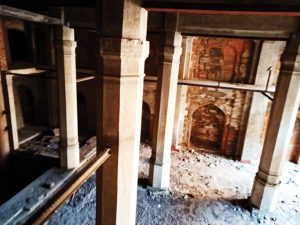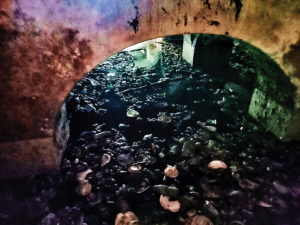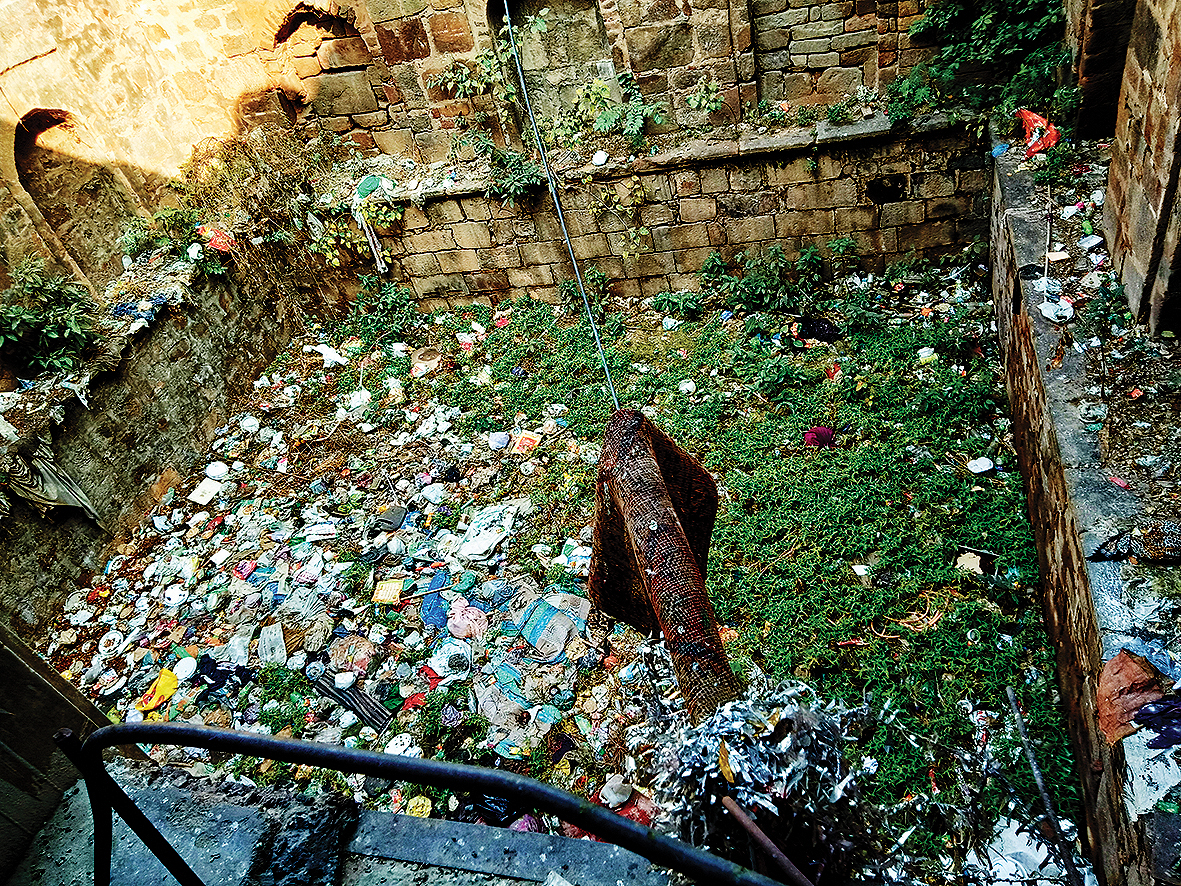Despite the need to ensure conservation and sustainable use of water in Delhi, baolis face deterioration and apathy
BUILT AND destroyed by many over the centuries, the city of Delhi has an indefensible history of forgetting marvels that are a reflection of the times they were built in. The city is scattered with buildings of historical importance waiting to be restored and conserved. Amongst some of the most ignored and often left to wither are the countless baolis built to meet the water demands of an ever-growing population.
One such gem is situated in Mehrauli inside the Dargah of Khwaja Qutb-ud-din Bakhtiyar Kaki commonly known as “Khwaja Kaki ki baoli or Hafiz Dawood ki baoli”. It is completely hidden from view and very few people know about its existence. The situation is such that even the devotees visiting the dargah are unaware of it. “I did not know that there is a baoli within the dargah premises”, said Abdus Shami, a regular visitor.
In 2017 when the Delhi government released a calendar enlisting the major baolis in the city, there was no mention of Khwaja Kaki ki Baoli.“We wrote to the government when they missed the name of our baoli, inquiring why they forgot to mention it. The Gandhak ki Baoli and Rajon ki Baoli are connected with the Khwaja Kaki ki Baoli, it is therefore important and should be conserved,” says Fauzan Sahab, the manager of Dargah Kaki of Mehrauli.
Today the structure of the Baoli is dilapidated and as its roof serving as the dargah’s courtyard has become a safety hazard. The water within the tank is hidden under layers of trash and is proof of the years of negligence and absence of upkeep the structure has faced.

“While most of the baolis in Delhi date back to the Tughlaq and the Lodhi period, this was built just a decade before the British took over completely. What amuses me is that the Mehrauli area was densely populated, and still a man managed to build this huge structure,” writes author and heritage activist Vikramjit Rooprai in his book, Delhi Heritage: Top 10 Baolis.
While talking to the Patriot he said, “While for some baolis the question of encroachment is there, as they now lack adequate catchment area but we cannot say the same for this one. The area was already densely populated when the baoli was built.” He added, “In 1844, a noble named Hafiz Muhammad Dawood Khan Mustaqeem Jung felt that the demand for water for by the visitors of the dargah were not being met. He therefore decided to build a baoli connected to the dargah.” The baoli is thus also known as Hafiz Dawood ki baoli.
The Rajon ki baoli is also an extension of the same story of negligence. And while unlike others, the baoli situated within the Mehrauli Archaeological Park is beautifully decorated with stucco work, the water in it is dirty and unused. Similarly, the Gandhak ki baoli, which is considered holy by devotees, is closed due to security measures as there have been instances of drowning. The water here too is covered with algae and the association of the baoli with divinity has done little to ensure its conservation.
In 2011-12, Shahjahanabad Redevelopment Corporation (SRDC) started the cleaning process of Kaki’s baoli. At the time, it was like a garbage dumb. The contractor stopped the work after cleaning 60 ft but upon being pushed by Fauzan Sahab, he agreed to desilt it. That is when clean water was found. The water table in the baoli is almost three storeys below the surface and it is believed that it has a 70 feet deep water tank. But the tank is uncovered and people use it as a garbage dump. “They said, it was the first phase of work, the next phase, which is maintenance and conservation would start later but then the government changed and work kept on being delayed”, said Fauzan Sahab.
When Patriot contacted the SRDC, the officials confirmed that the first phase of work was complete but now it has stopped. “We started the work at Dargah Kaki but it was stopped, now we are busy with the election.”
Fauzan Sahab said that INTACH (Indian National Trust for Art and Cultural Heritage) was also interested in reviving the baoli but there was no action taken towards it. INTACH worked towards the revival of the baoli at Dwarka but the work did not do much good and now the baoli has almost dried out.
Ajay Kumar, director of INTACH Delhi Chapter said, “There were talks of reviving it but the work could not reach its conclusion. Few years ago, when we visited it the water was stinking.”
“Few years ago when water was found in the basement of nearby buildings a petition was filed to ascertain the source of the leak. The Delhi Jal Board upon investigating found that water from the baoli was seeping into the adjoining areas. Samples of the water were also taken and it was found that after adding chlorine, the water quality was at par with the Jal Board’s water.
LL Meena, an official of the Delhi Jal Board inspected this baoli, says Fauzan Sahab. However, Meena denies that any inspection was carried out by him. Fauzan further says that “Since we already had a water body in place, we offered the board to use its water for nearby areas to ease the restoration and maintenance. But nothing happened.”

Fauzan Sahab, who has spent more than a decade in the dargah, says the baoli is the sum of his hopes and emotions. He says, “We have been writing to ministries and the Jal Board, but nothing is happening. If the Delhi Jal Board, the government and the Delhi Waqf Board initiate its revival, we can build a good water body. It will resolve the water problem in our area.” With a smile he added, “We hear that future wars would be for the cause of water, we do not want that to happen.”
The Delhi Jal Board has facilitated the use of the water of Banjaron ki baoli, in Matia Mahal and the baoli in Purana Qila. If the same conservational work is carried out at the baoli in the dargah, it could cater to the needs of the local populace.
Anupam Mishra, a conservationist who died in 2016, used to stress upon the use of traditional sources of water. He documented in his book, ‘Aaj bhi khade hai talaab’ (The ponds are still relevant), “Our age-old knowledge of water conservation reminds us of our foolish fetish about development. While we have resources already in place, why are we allowing them to be diminished?”





